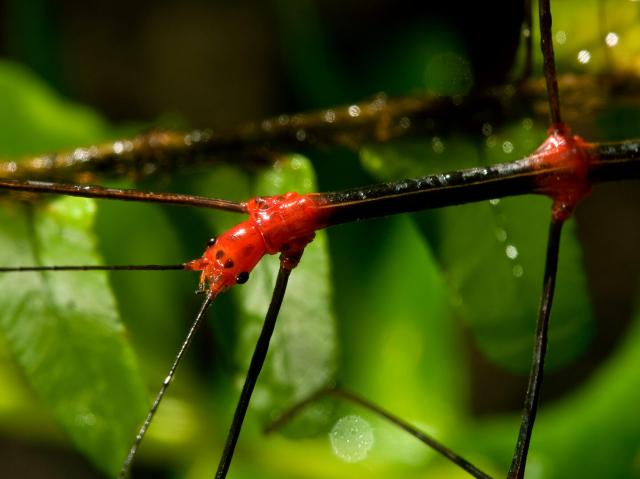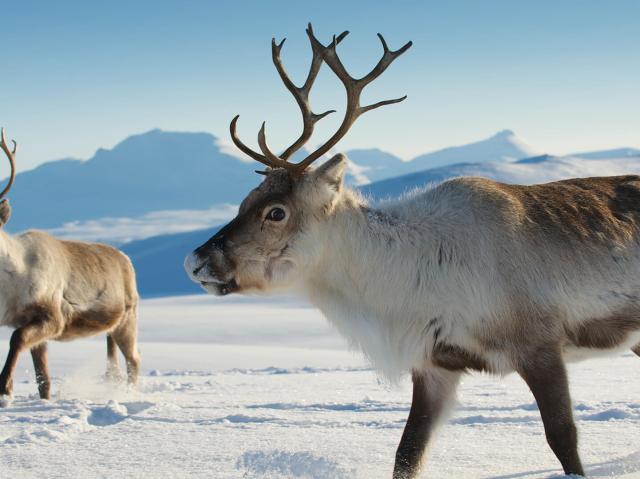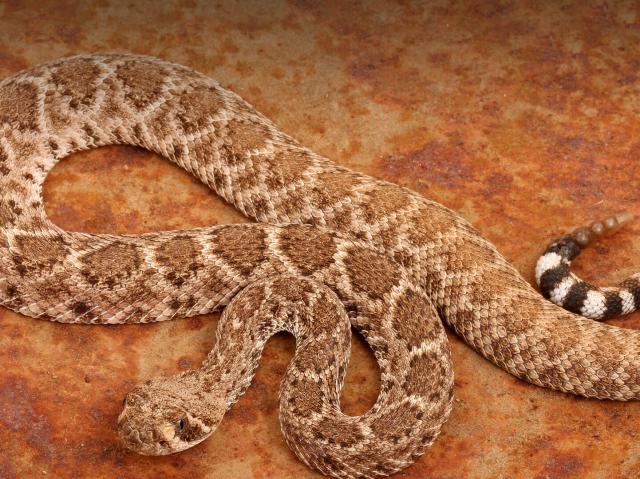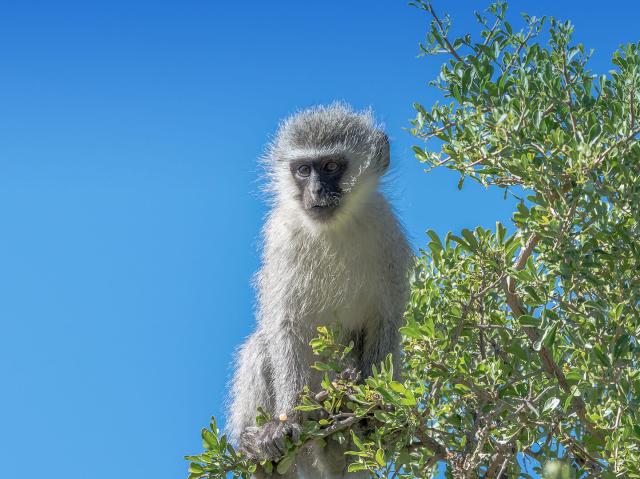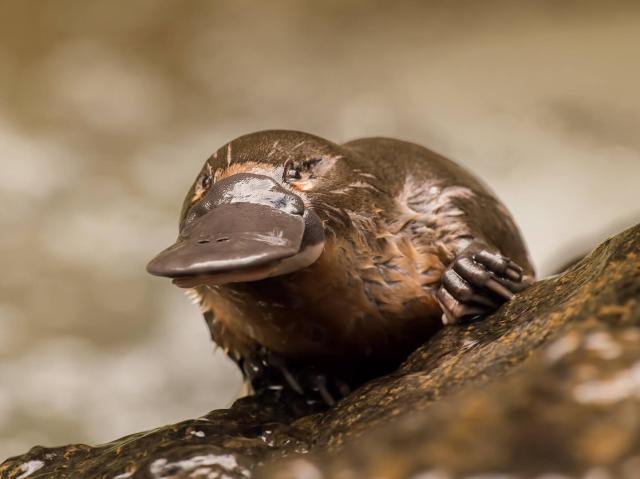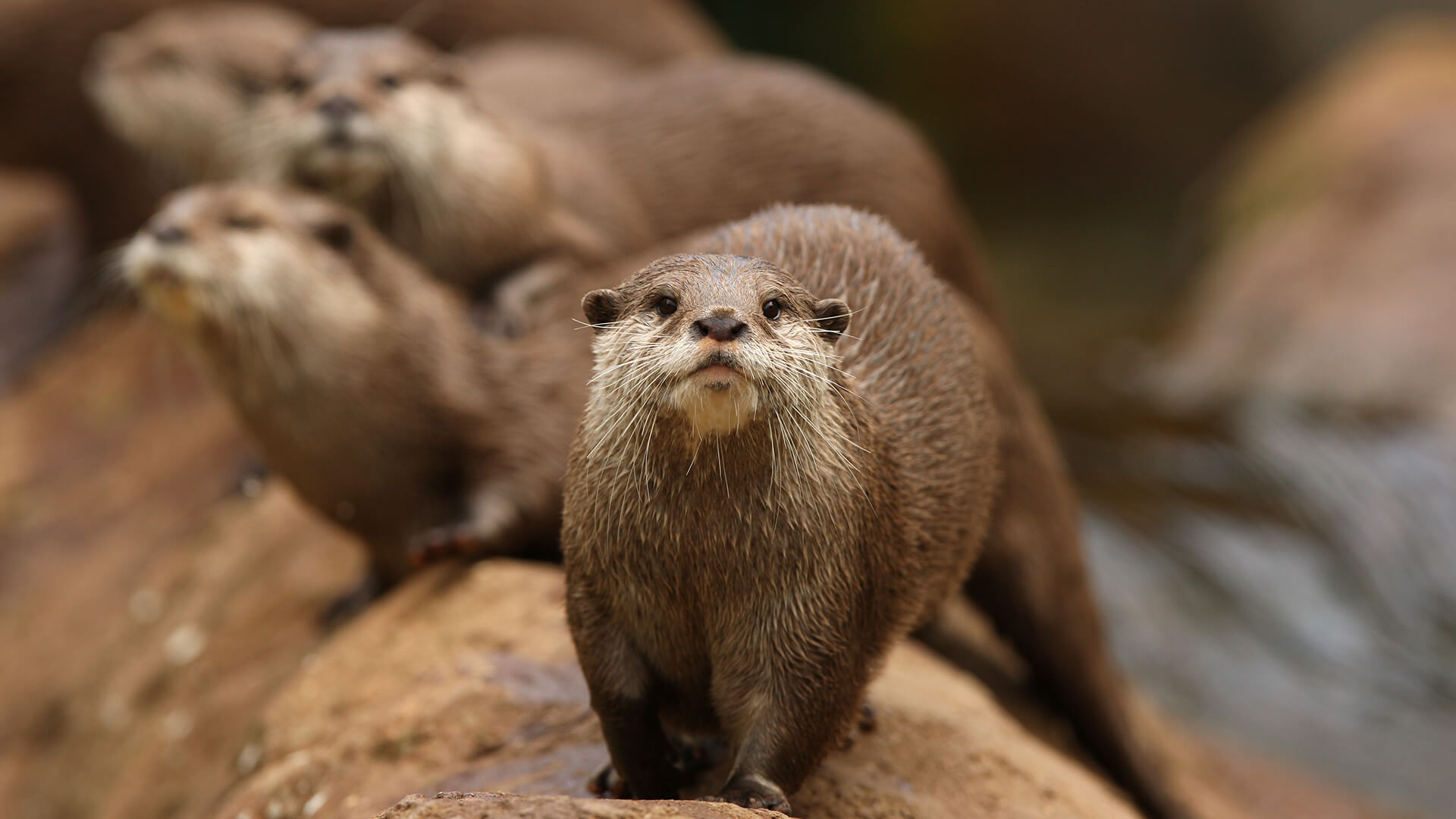
Otter

- CLASS: Mammalia (Mammals)
- ORDER: Carnivora
- FAMILY: Mustelidae
- GENERA: 6
- SPECIES: 13

ABOUT
Otters are the only serious swimmers in the weasel family. They spend most of their lives in the water, and they are made for it! Their sleek, streamlined bodies are perfect for diving and swimming. Otters also have long, slightly flattened tails that move sideways to propel them through the water while their back feet act like rudders to steer.

Almost all otters have webbed feet, some more webbed than others, and they can close off their ears and nose as they swim underwater. They like to swim on their back and sides and can see just as well underwater as they can above. Otters can stay submerged for five to eight minutes, depending on the species, because their heart rate slows, and they use less oxygen. Sea otters are good at floating on the water’s surface, as air trapped in their fur makes them more buoyant. They are much more buoyant than river otters, which have to actively swim to keep afloat.
Have you ever noticed that when otters come out of the water, their outer fur sticks together in wet spikes, while the fur underneath still seems dry? That’s because otters have two layers of fur: a dense undercoat that traps air and a topcoat of long, waterproof guard hairs. Keeping their fur in good condition is important, so otters spend a lot of time grooming. In fact, if their fur becomes matted with something like oil, it can damage their ability to hunt for food and stay warm.
An otter’s rounded nose has whiskers above the lips that detect water current changes as well as the presence of prey or potential predators lurking in the water. And what do otters have to fear? It depends on where they live. Giant otter young are vulnerable to large cats, anacondas, and caimans. Sea otters face predation by killer whales, sea lions, and sharks. Small-clawed otters are often killed by domestic dogs. Juvenile spotted-necked otters are prey for fish eagles and monitor lizards. Other otter species must watch out for birds of prey and crocodilians.

Otters are very energetic and playful. You might say they love to party! They are intelligent and curious, and they are usually busy hunting, investigating, or playing with something. Otters like to throw and bounce things, wrestle, twirl, and chase their tail. They also play games of tag and chase each other, both in the water and on the ground. River otters seem to like sliding down mud banks or in the snow—they’ll do it over and over again! All this activity is part of the otters’ courtship, social bonding, and communication behavior, and since young otters need practice, they tend to be even more playful than the adults.
Otters make lots of different sounds, from whistles, growls, and screams to barks, chirps, moans, and coos. River otters scent mark by using paired scent glands near the base of their tail. These glands produce a strong, musky odor. The scent markings are believed to delineate territorial boundaries and communicate information concerning individual identity, sex, sexual state and receptivity, and time elapsed between scenting visits. This marking behavior looks playful, as the otters rub on logs, roll in piles of fallen vegetation, or grab armfuls of leaves on bushes and trees to rub on their chest and legs, but it has a serious communication purpose in the otter world. Urinating or defecating in the same place is also used as a form of communication. Eurasian otter males form a dominance hierarchy, with the highest-ranking individuals occupying the most favorable ranges and marking them accordingly.
SaveSave
SaveSave
SaveSave
HABITAT AND DIET
The only continents without otters are Australia and Antarctica, and the only habitats they do not live in are deserts, polar regions, and mountains. The most widely distributed otter is the Eurasian otter, found throughout Europe, North Africa, and Asia to Japan and Indonesia. Typical otter habitat includes both water and land, except for the sea otter, which rarely comes ashore. Except for sea otters, otters live in dens, most made by other wildlife, such as beavers. They can also live on rocks or driftwood.
Beaver habitat is a great place to find otters, because the otters benefit from the dams and dens beavers build. Typical river otter territory contains a den, with several passages and a dry inner chamber, grassy or sandy places to roll and groom, slides found on muddy banks or snow banks, and feeding sites.

For the sea otter, half of each day is spent diving for food and eating it. Another important daily task for all otters is grooming. They clean their fur not by licking it but by biting and scratching it or rubbing and rolling against grass, rocks, or logs to keep the fur in good condition.
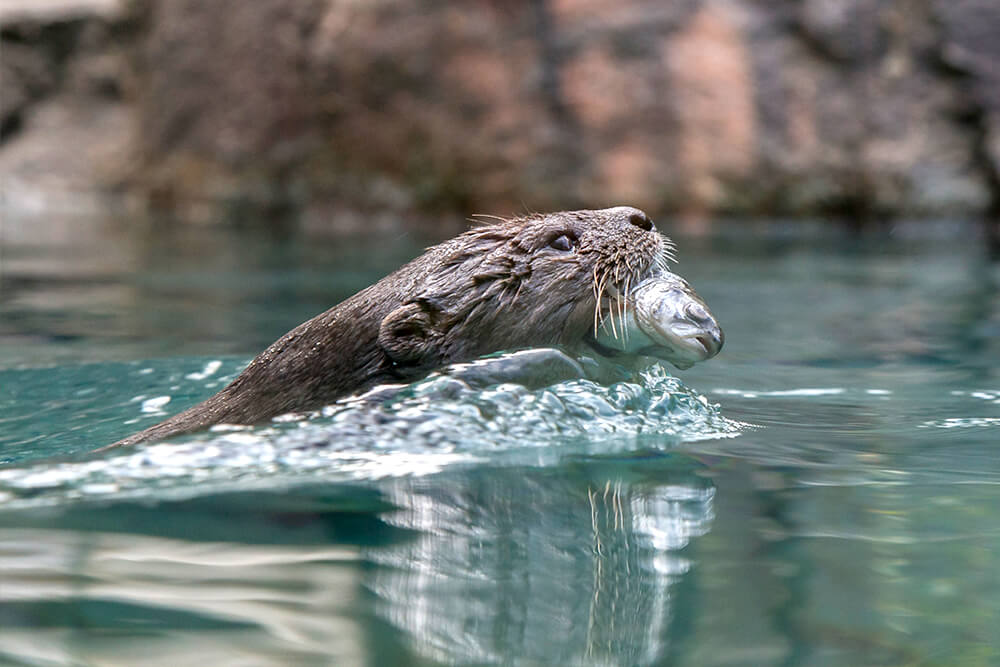
Otter food may not all come from the ocean, but it is definitely fishy! River otters eat mostly fish, frogs, crayfish, crabs, and mollusks, with an occasional small mammal or bird. Sea otters eat many of the same things, but mostly sea urchins, abalone, crabs, fish, octopuses, mussels, and clams. They crack open clams and mussels with rocks they hold on their stomach—the only otter that uses rocks as tools.
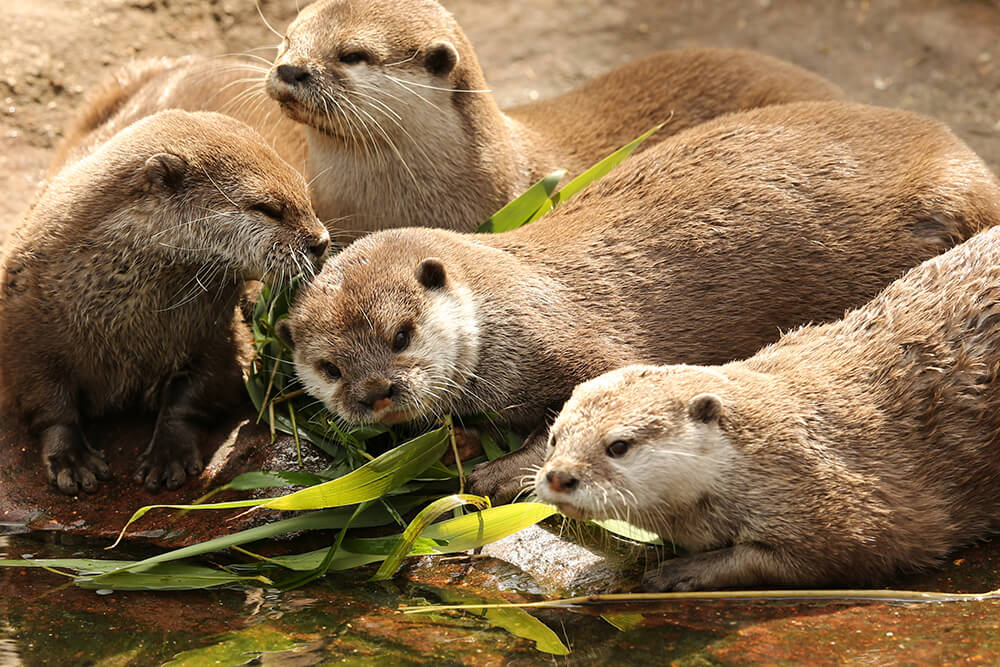
Otters have long, sensitive whiskers that help them find prey, even in murky water. Some, like the Asian small-clawed otter, also use their hands to probe into mud or under rocks to find a tasty meal that might be hiding there. River otters use lots of energy and digest their food very fast, so they eat several times a day. Sea otters need to eat nearly a third of their body weight each day. That’s a lot of abalone!
SaveSave
SaveSave
SaveSave
SaveSave
FAMILY LIFE
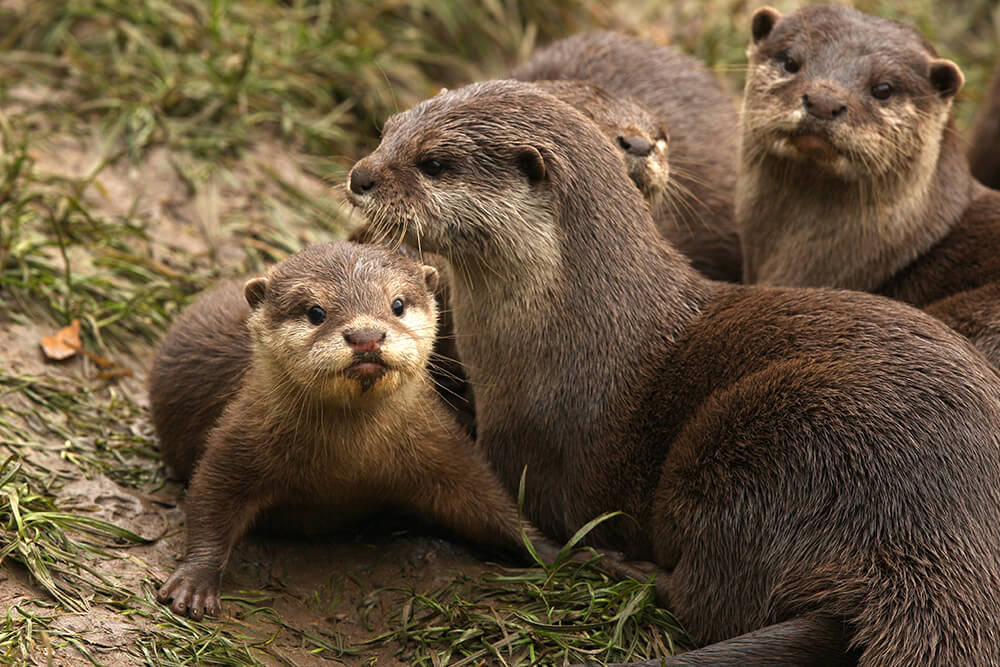
For most otters, social groups are made up of a mother, her older offspring, and her newest pups; the males spend most of their time alone or with a few other males. During breeding time or where there’s lots of food, though, larger otter groups may gather, especially among sea otters in kelp beds.
Most otters are born in a den, helpless and with their eyes closed. The mother takes care of them, often chasing the father away after their birth, although in some species, the dad may come back after a few weeks to help raise them. The babies, called pups, are born helpless and pink. They open their eyes and start exploring the den at about one month, learn to swim at two months, and stay with their mother and siblings until they are about one year old, when they head off on their own.
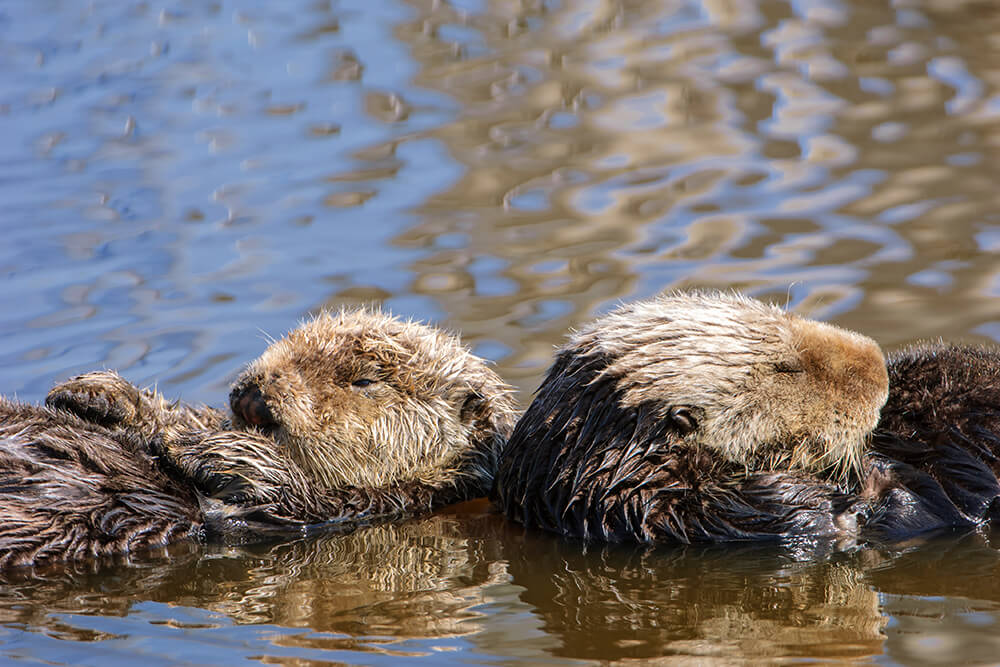
For sea otters living in their ocean habitat, it’s a little different—the pups are born with their eyes open, and they have a special coat of hair, so they can float, even though they can’t swim yet. They are carried on their mother’s stomach until they are about two months old, when they start swimming and diving on their own.
SaveSave
SaveSave
CONSERVATION

It’s hard to determine the otter population in native habitats, because of their secretive nature and wide range. There are many studies showing the decline or extinction of otters in certain areas. In most countries, otters are now classified as either threatened or endangered and are under special protection. The North American river otter Lontra canadensis was once in serious trouble because of habitat destruction and trapping, but as a result of reintroduction projects and legal protection, their numbers have increased throughout North America.
There are several factors affecting the decline of river otters. The pollution of rivers and waterways is a major threat. Substances such as organic waste from domestic and industrial sources and pesticides used to control insects are often washed into waterways. Oil spills contaminate an otter’s fur, increasing heat loss, reducing buoyancy, and proving toxic when ingested.
Habitat destruction or loss is also a major factor affecting the river otter. Construction of dams leaves lower rivers dry and unsuitable for river otter populations. Deforestation affects river otters through much of South America and Asia. Mining rivers for gravel kills the fish that are the otters’ main food source. Changing river courses for flood prevention and agriculture destroys otter habitat. River otters are also hunted and trapped for their pelts or killed by fishermen who see them as competition. And otters often get trapped and drown in fishing nets.
California or southern sea otters Enhydra lutris nereis were nearly wiped out a century ago, hunted for their thick fur. An international treaty banned otter hunting in 1911, but the California sea otters have been slow to recover from the devastation. Pollutants in the water off California’s coast and the increase of commercial fishing operations may have negatively affected this population.
Today, giant otters Pteronura brasiliensis, marine otters Lontra felina, South American river otters Lontra provocax, sea otters Enhydra lutris, and hairy-nosed otters Lutra sumatrana are endangered.
Want to help otters? Use water-efficient appliances! Water-efficient washing machines and dishwashers, low-flow showerheads, and low-flush toilets can reduce water consumption by 60 to 90 percent. That means more clean water stays in our rivers where river otters live.
By supporting San Diego Zoo Wildlife Alliance, you are our ally in saving and protecting wildlife worldwide.
Sounds
YOUNG
Gestation: 2 months for smaller species; up to 5 months for sea otters
Number of young at birth: 1 to 5; usually 2
Weight at birth: 4.5 ounces (128 grams) for smaller species; up to 5 pounds (2.3 kilograms) for sea otters
Age of maturity: 2 to 5 years
SIZE
Length: Largest - giant otter Pteronura brasiliensis, 4.9 to 5.9 feet (1.5 to 1.8 meters); smallest - Asian small-clawed otter Amblonyx cinereus, up to 2.9 feet (.9 meters)
Weight: Heaviest - sea otter Enhyrda lutris, males up to 90 pounds (41 kilograms); lightest - Asian small-clawed otter, up to 11 pounds (5 kilograms)
FUN FACTS
Otters can close off their ears and nose as they dive and swim underwater.
Otters are quite flexible and can easily touch their nose to their tail.
North American and European river otters have been known to share dens with beavers—but the beavers do all the building.
Sea otters often hang out together in large groups called rafts.
River otters can stay submerged for up to eight minutes, a relatively long period of time for an air-breathing mammal.
Sea otters have the densest fur of any mammal, with about 100,000 hairs in a space about the size of a postage stamp.




